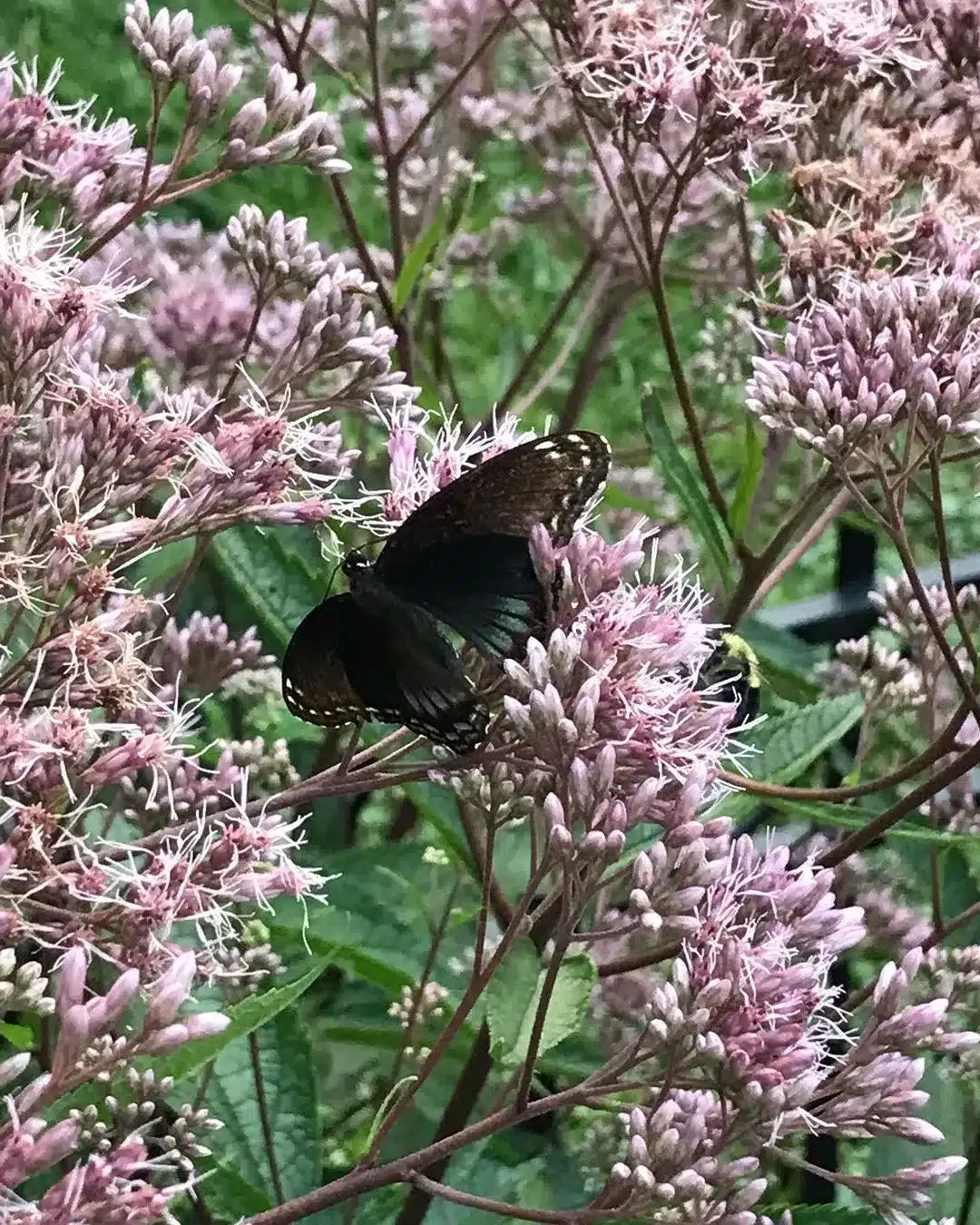While other flower varieties start to dry in the autumn, Joe Pye Weed will still beautify your fall garden with vibrant pink and purple blossoms.
Joe Pye Weed can beautifully enhance your garden, especially in the first planting year, with its clustered blooms resembling Dandelion flowers.
So, read this entire article to renovate your garden with a splash of vibrant Joe Pye blossoms from summer to fall.
Table of Contents Show
5 Joy Pye Weed Varieties With Differentiating Features
The best place to plant Joe Pye weeds is in the full sun to partial shade with companion plants like knotweed, mountain mint, ironweeds, coneflowers, etc.
Joy Pye weed isn’t invasive, but some varieties can spread rapidly and replace other plants. To control spread, deadhead the spent flowers before they reseed.

Decor your garden with the following list of Joe Pye Weed varieties.
1. Three-Nerved Joe-Pye Weed
Three-Nerved Joe Pye Weed (E. dubium) is one of the beautiful Joy Pye varieties consisting of serrate leaves with three veins and dark purple to pink flowers.
Moreover, this astonishing plant can reach 3-5 feet tall and 2-4 feet wide, bearing 6 inches-long leaves in whorls and purple stems.
Native to the East Coast, this weed with multiple unbranched stems can thrive well in hardiness zones 4 through 8.
This variety can self-seed to spread in your outdoor garden. But you can also propagate them from division and stem cuttings.
2. Hollow Stem Joe-Pye Weed
As its name suggests, Hollow Stem Joy Pye Weed (E. fistulosum) has a pitted central stem and grows 3 to 9 feet tall, spreading up to 3 feet.
This perennial is native to Missouri and bears whitish pink-purple flowers on its upright green stems.
Furthermore, you can find the leaves in whorls, and each whorl bears 4-7 elliptical leaves with toothed margins.
In proper conditions, this beautiful plant can spread from its underground rhizomes along with reseeding.
3. Spotted Joe-Pye Weed
Spotted Joy Pye Weed (E. maculatum) has 4-5 leaves per whorl and dark purple blossoms on the beautiful purple-spotted stems.
This incredible plant is about 5-8 feet tall and can spread around 3 feet with a solid stem, unlike Hollow stem Joy Pye Weed.
The blossoms of this plant are a combination of vibrant-colored asters and other ornamental grasses, and the plant needs plenty of space.
However, you can also find its dwarf variety as ‘Dwarf Red’ Joe Pye Weed with a height of 3-4 feet and spread to 2 feet.
Native to Eastern North America, this plant best suits the hardiness zones 2-7 and has a great powdery mildew resistance.
Similar to Hollow Stem Joy Pye, the plant spreads by reseeding as well as with the underground rhizomes.
4. Carolina Joe-Pye Weed
Carolina Joe Pye Weed (E. purpureum) is native to Eastern and Central US and attains a height of 5-7 feet, spreading around 2-4 feet.
Moreover, the whorly foliage arrangement bears 3-4, 6 inches long, ovate, and serrated leaves per whorl.
You can easily grow this Joe Pye plant if you are from USDA zones 4-8 and propagate it by stem cuttings, division, and seeds.
5. Appalachian Joe-Pye Weed
Appalachian Joe Pye Weed (E. steelei) is the rare Joe Pye species bearing pale, pink, or purple blossoms on the greenish-purple stems.
Moreover, you can notice it’s 4-7 leaves per whorl, and the flowerheads have 4-7 florets per whorl.
This upright, erect plant can also reach 5-7 feet high, spread to 2-4 feet, and best suits USDA zones 4-8.
You can find Appalachian Joe Pye Weed only in its native place, the Appalachian Mountains of the eastern United States.
Joe Pye Weed needs plenty of space. So it’s better to provide them with 3-4 feet of spacing between each plant. Plant only one Joe Pye in one container providing ample space.
From Editorial Team
Joe Pye Weed Vs. Milkweed!
Milkweed bears clumped flowers and lance-shaped leaves similar to Joe Pye weeds. But, both plants have some differences.
Milkweeds produce milky sap on their stems and bear seed pods which aren’t characteristics of Joe Pye Weeds.
